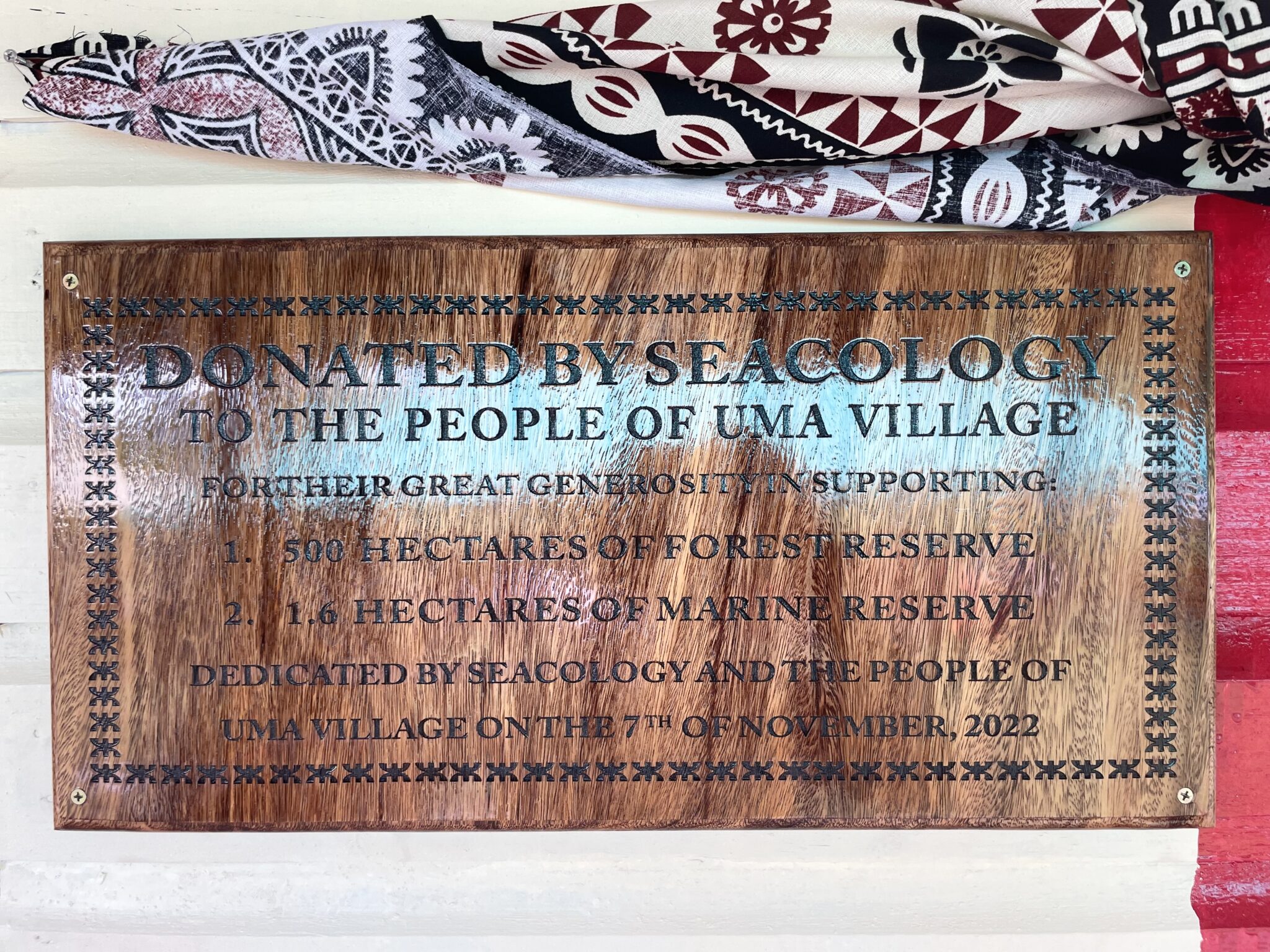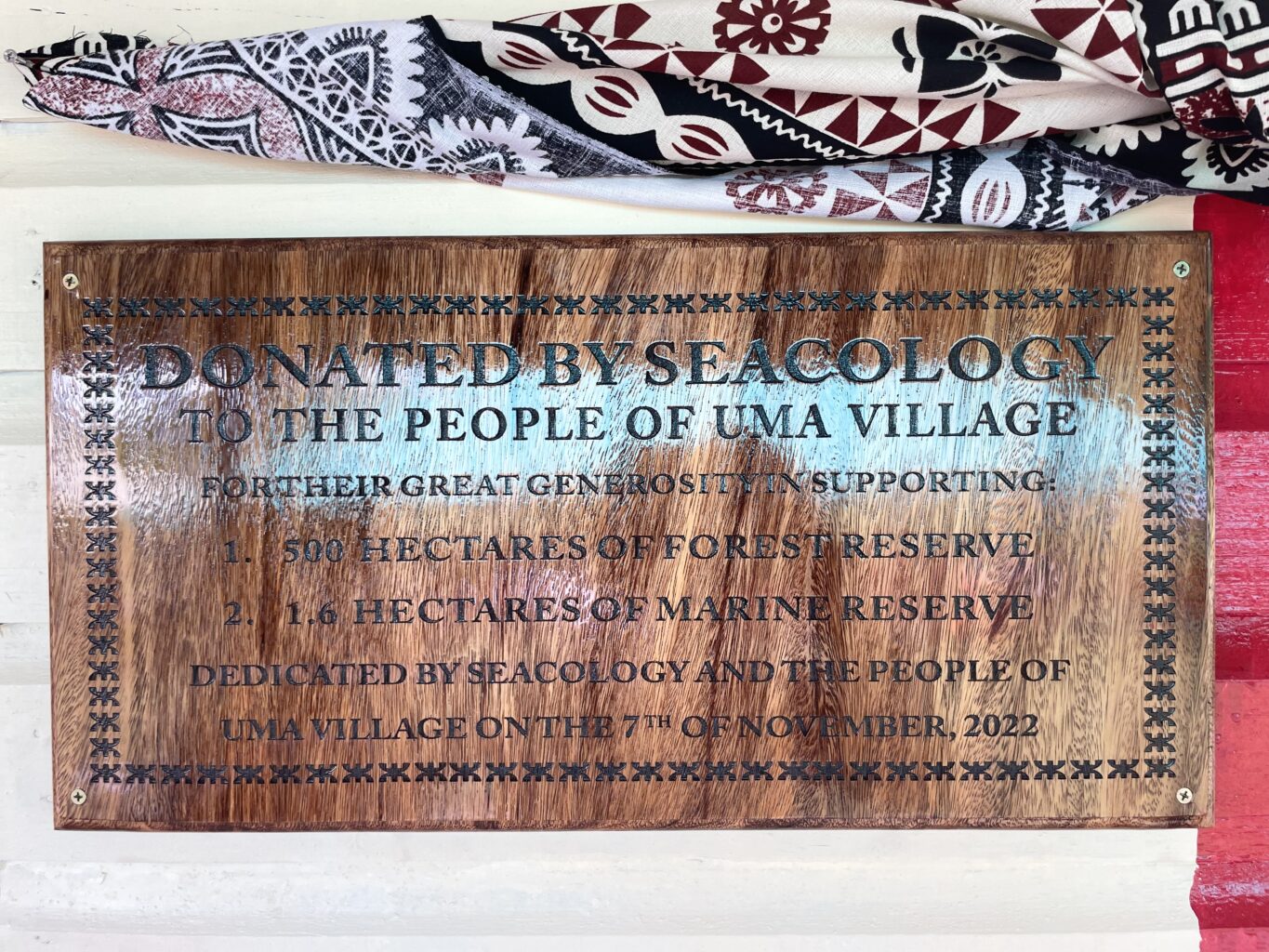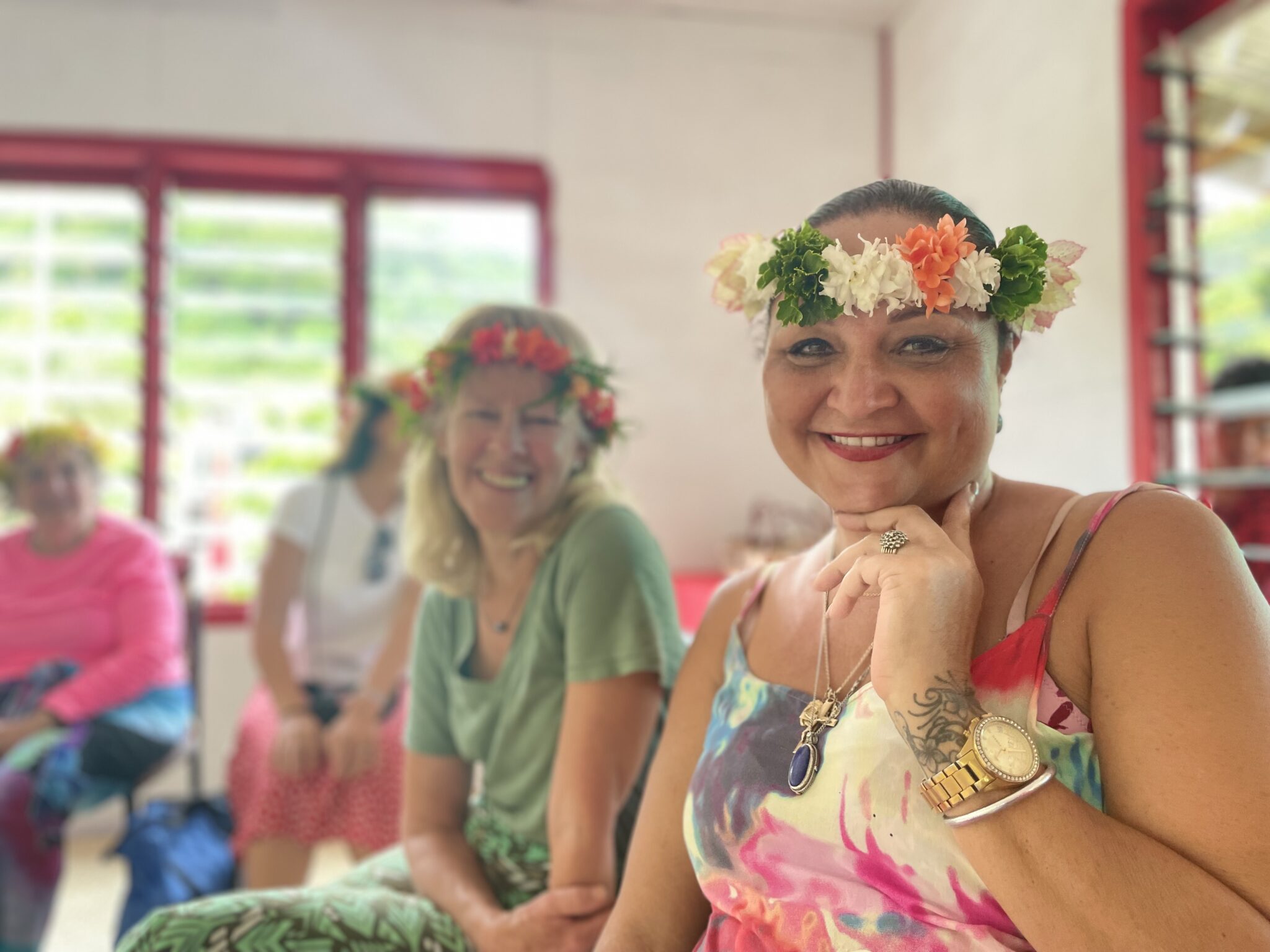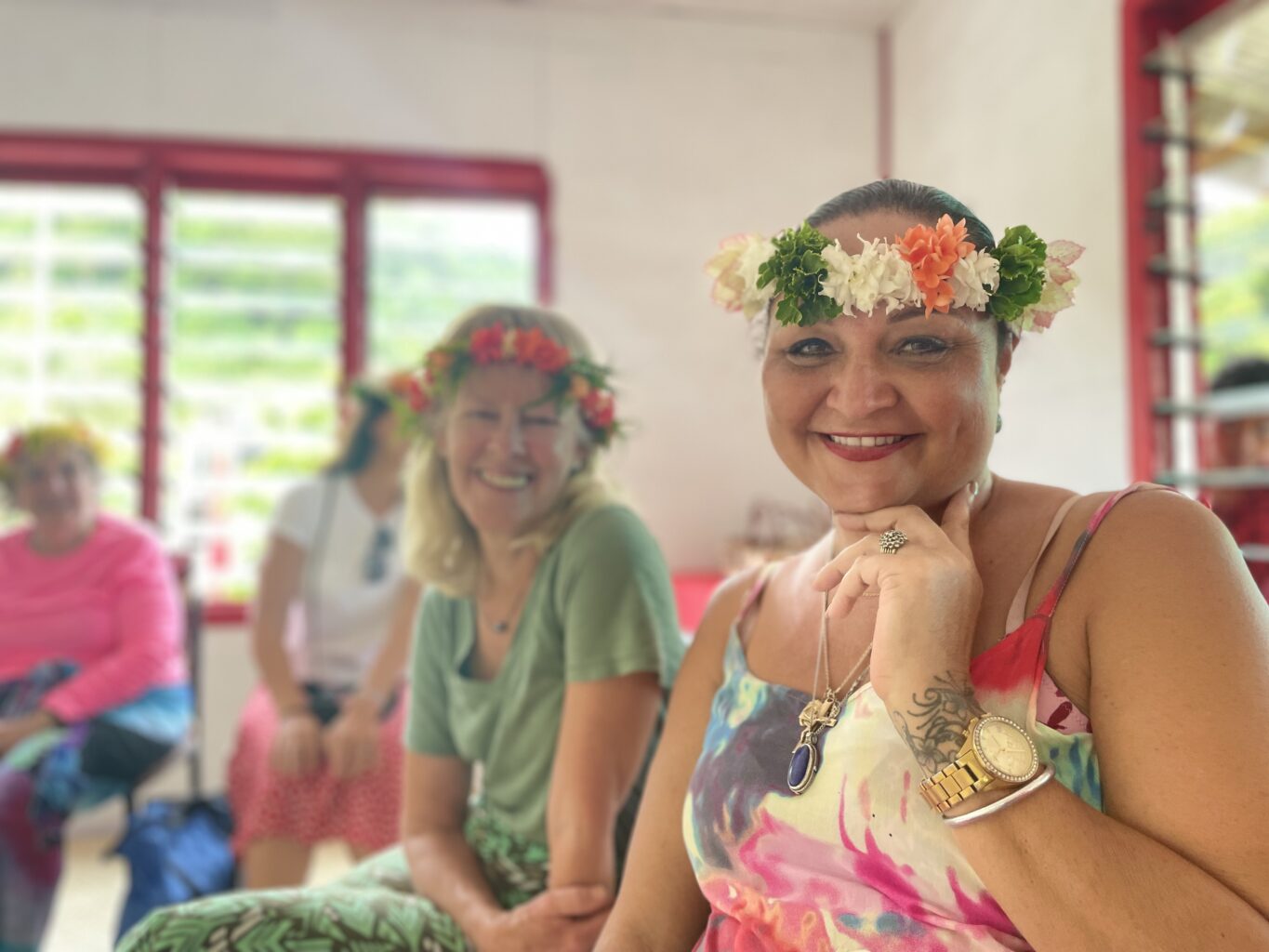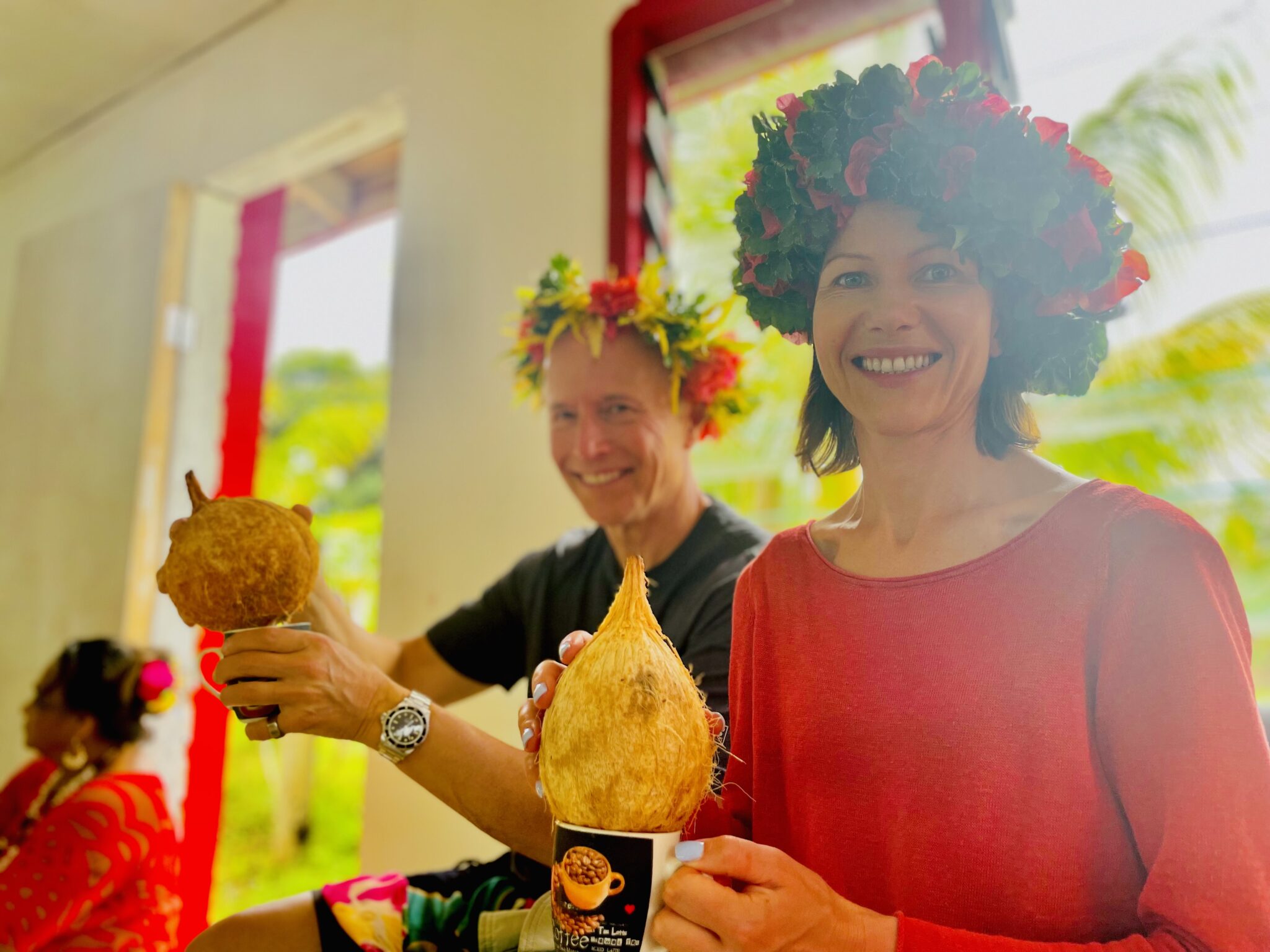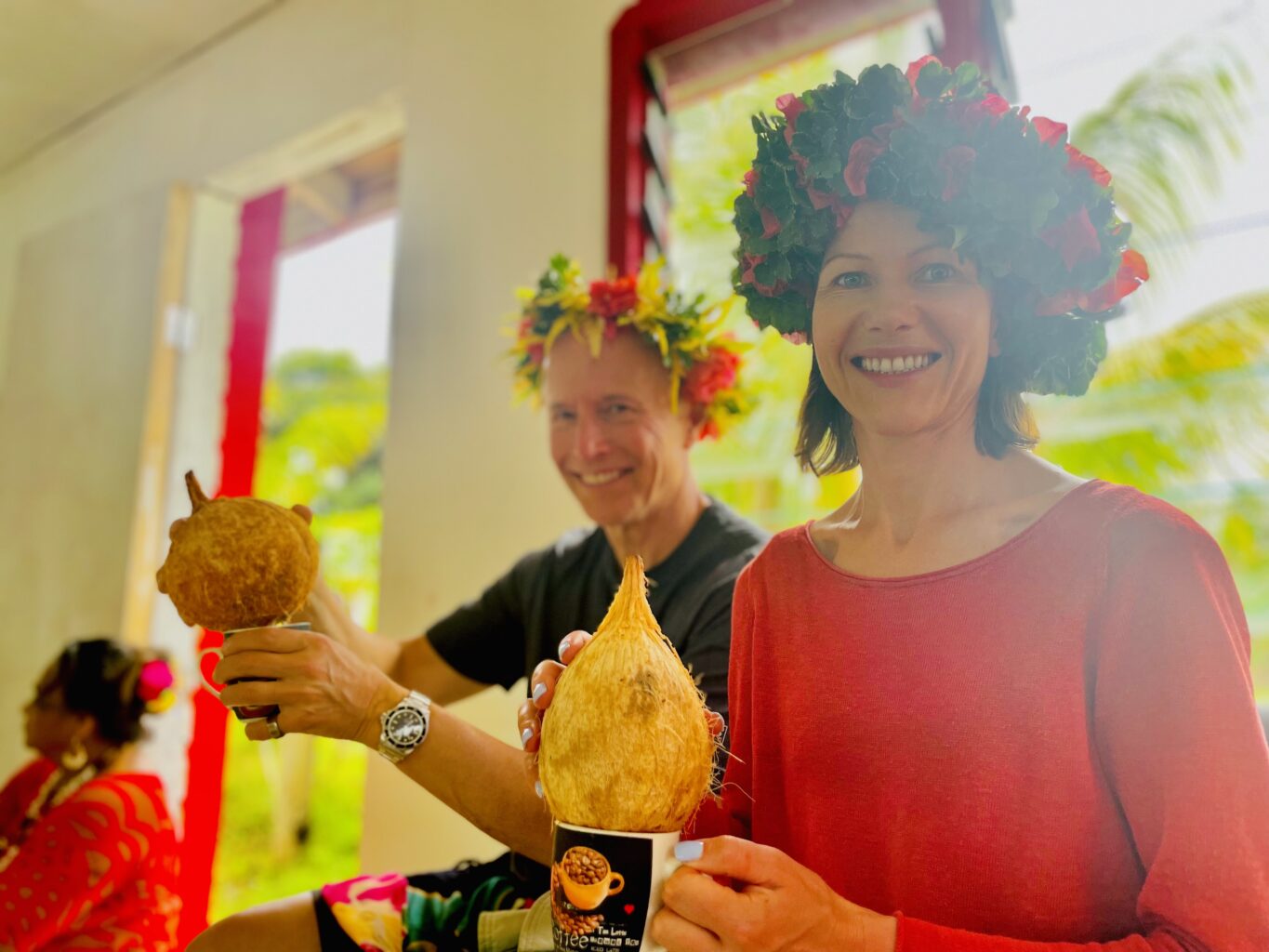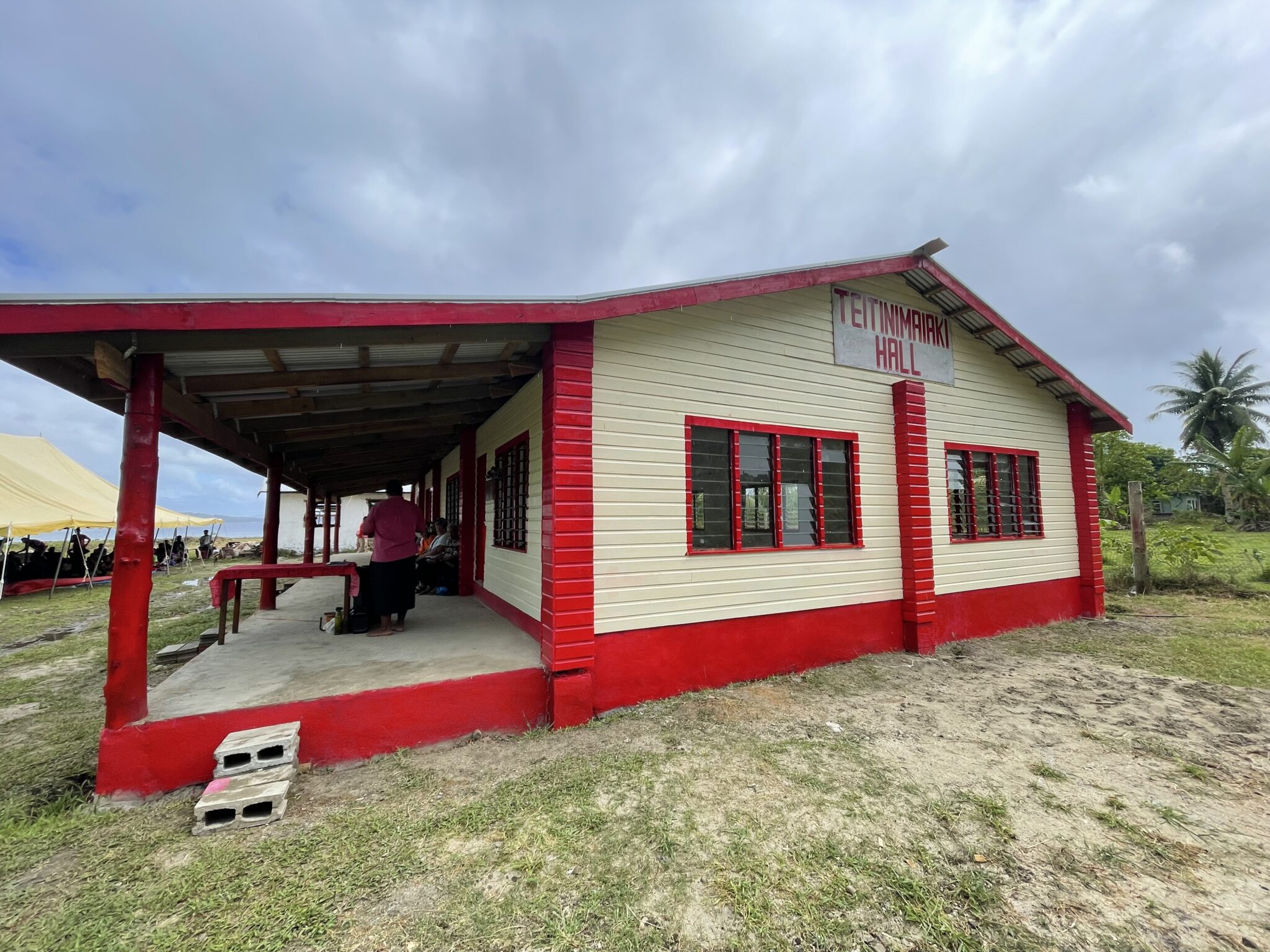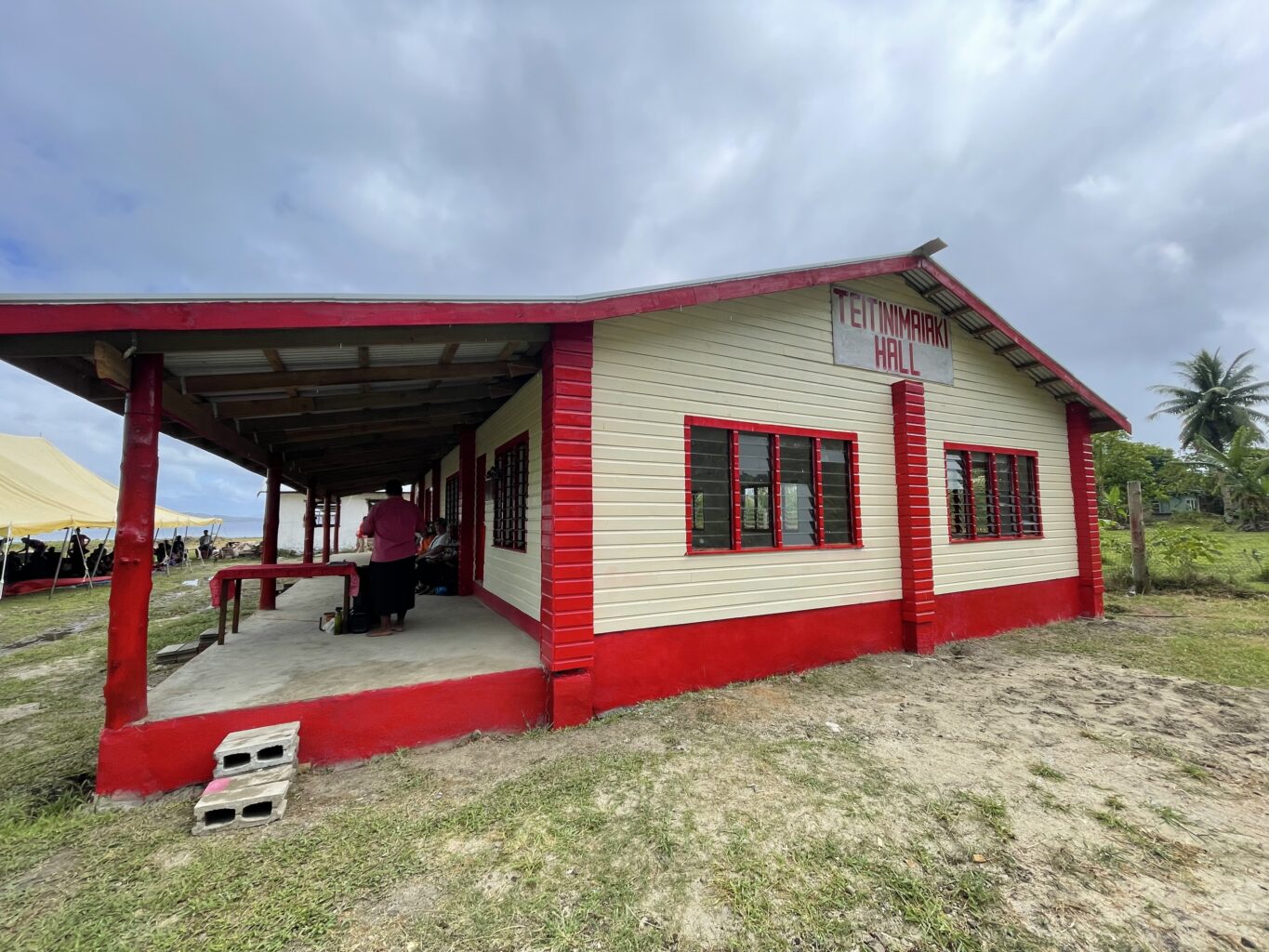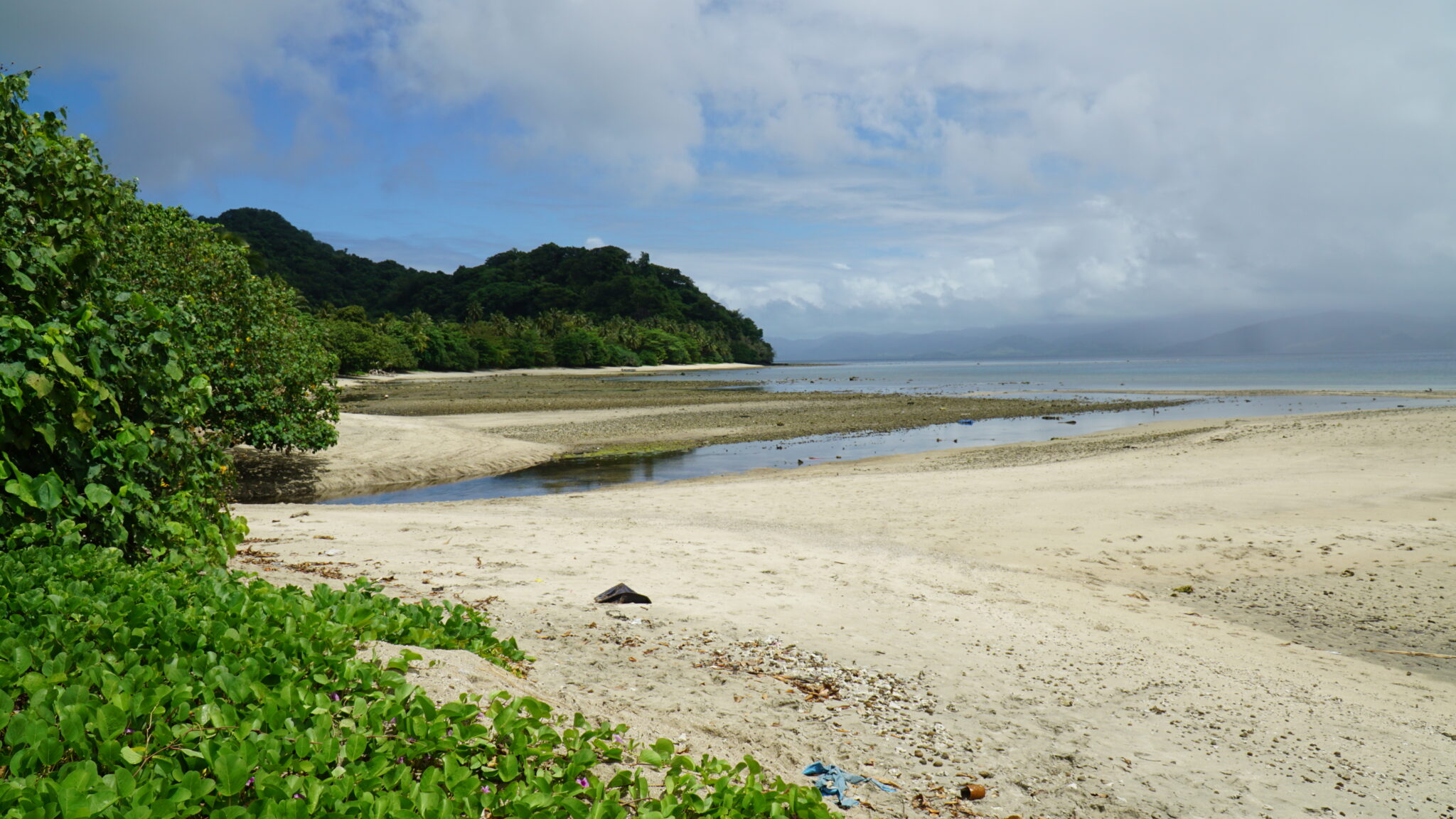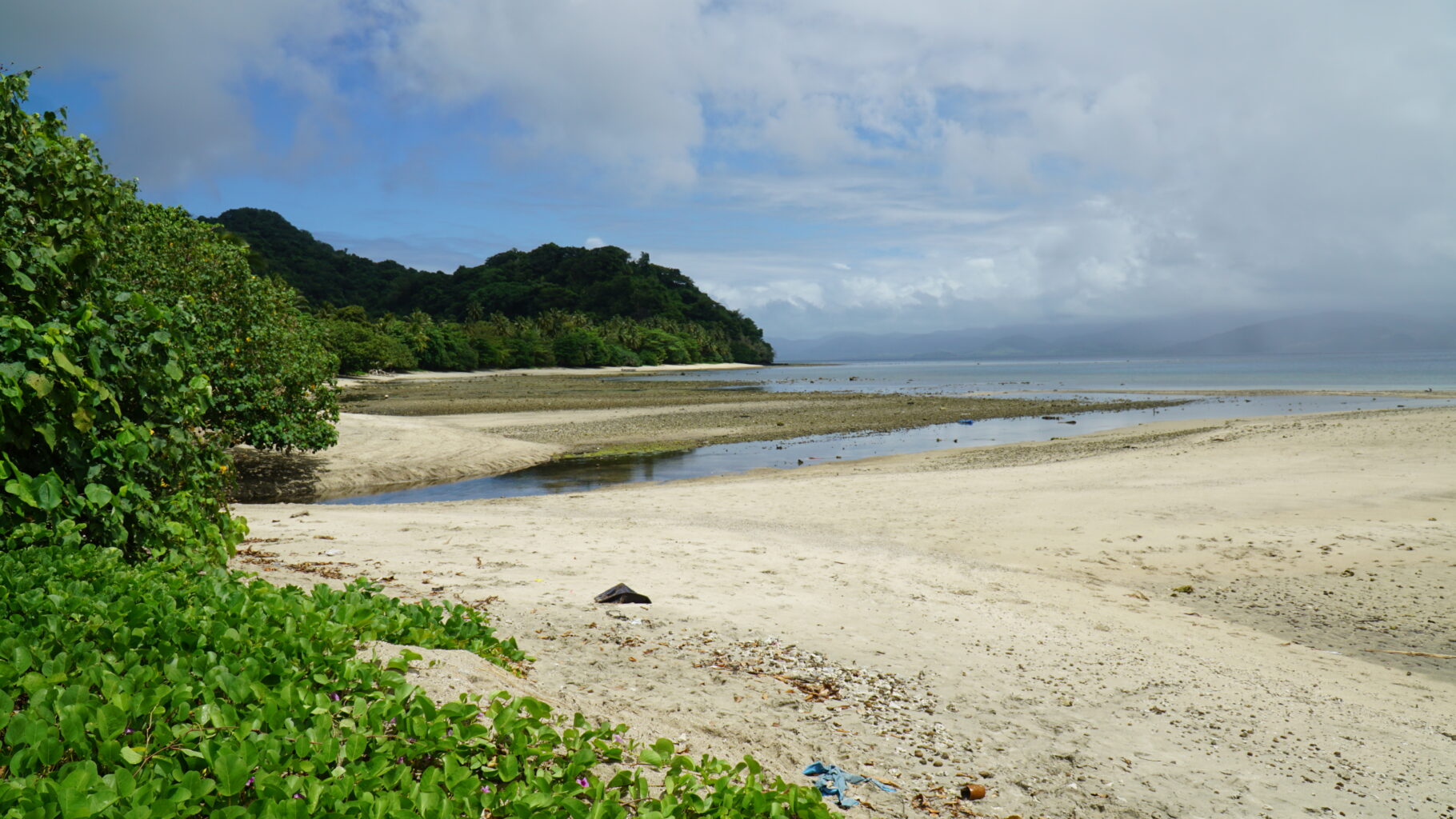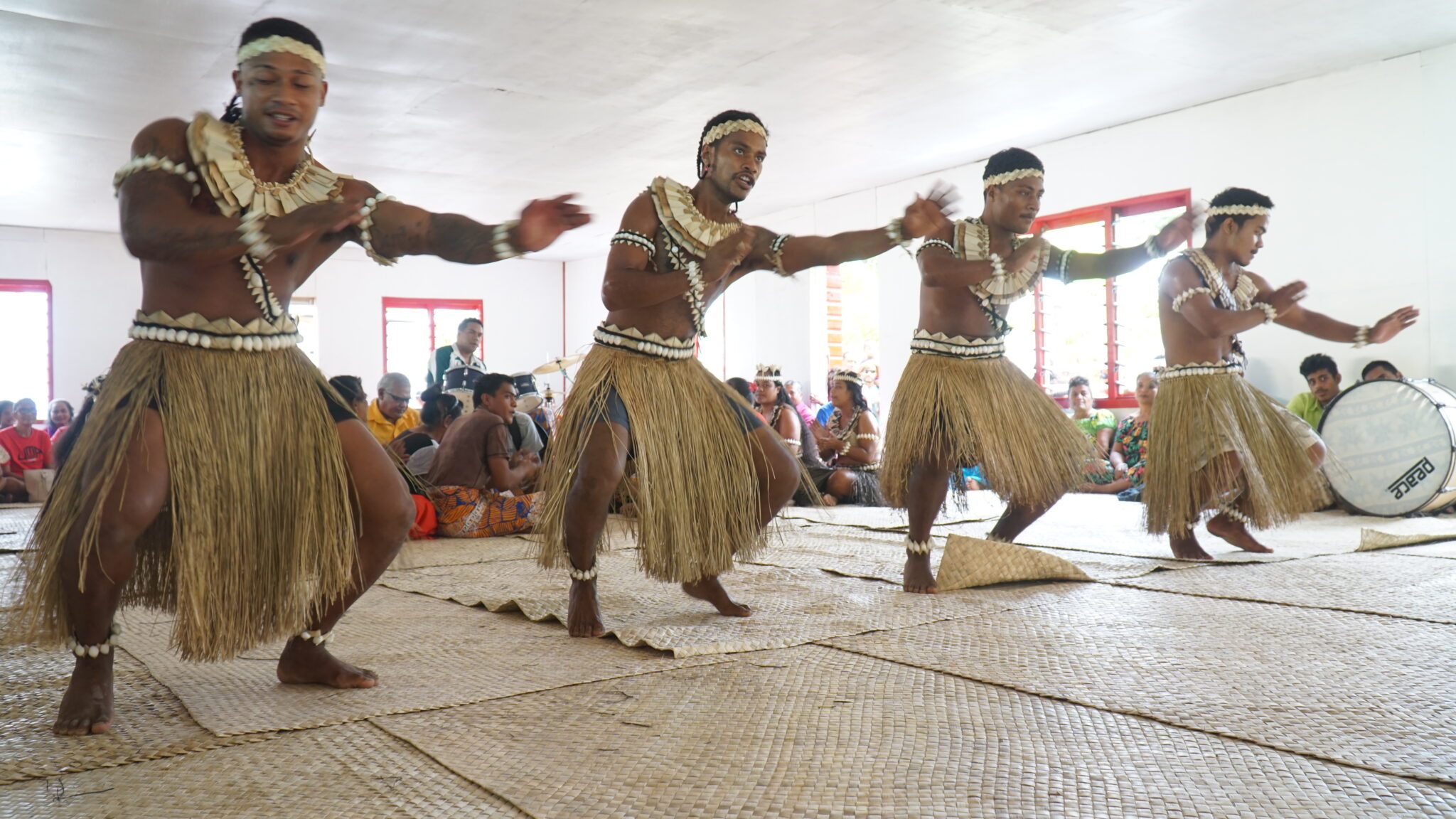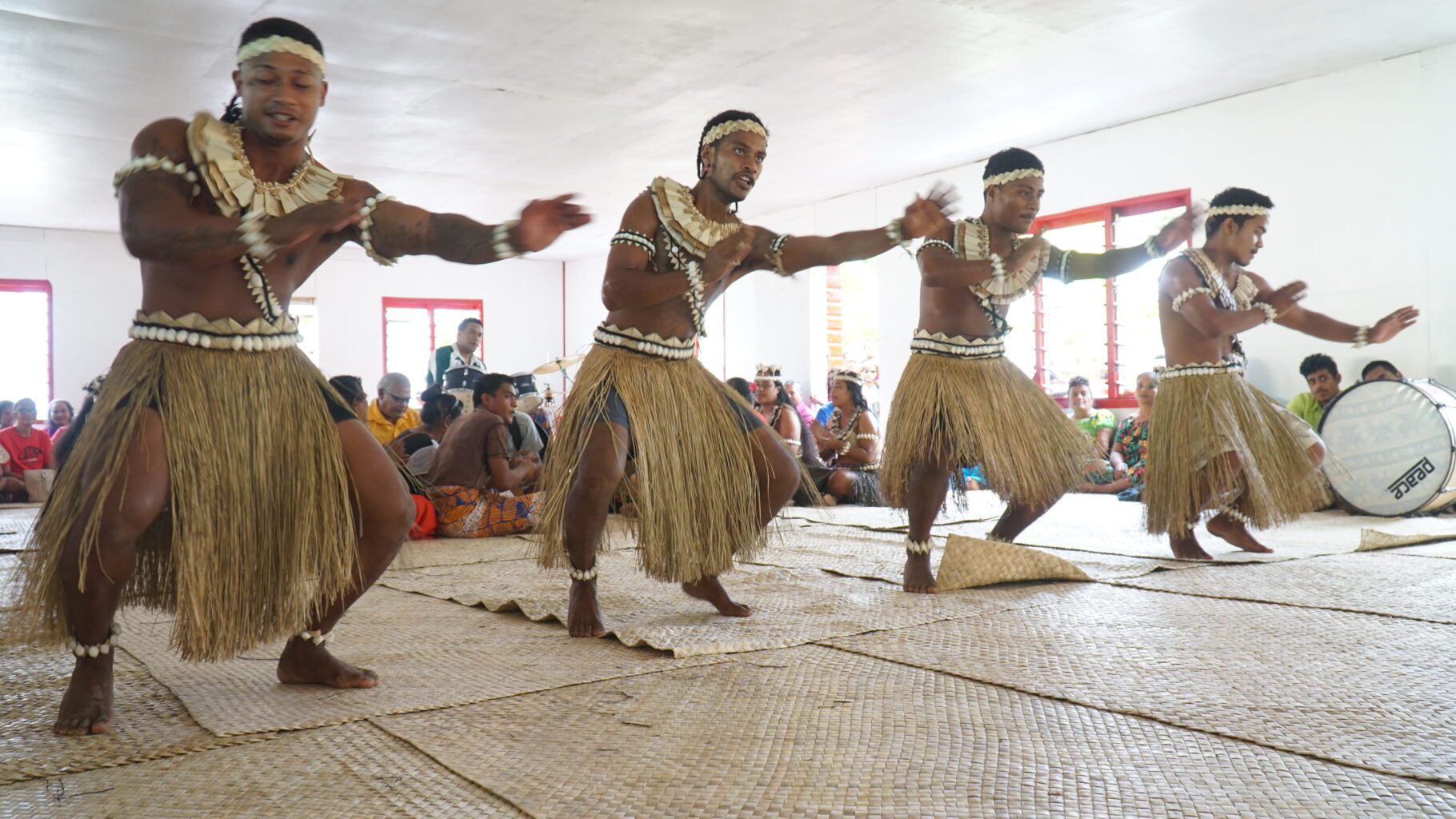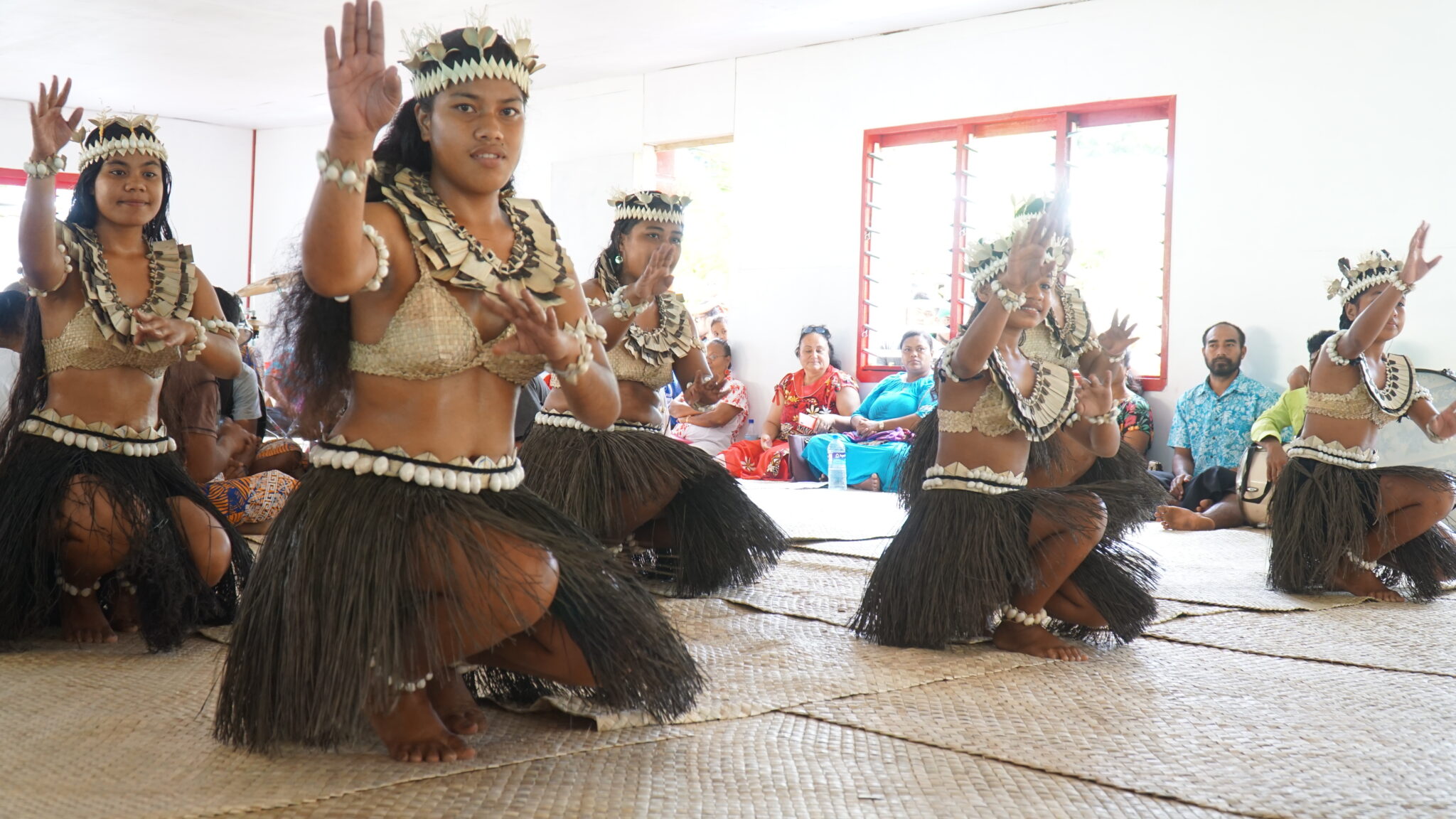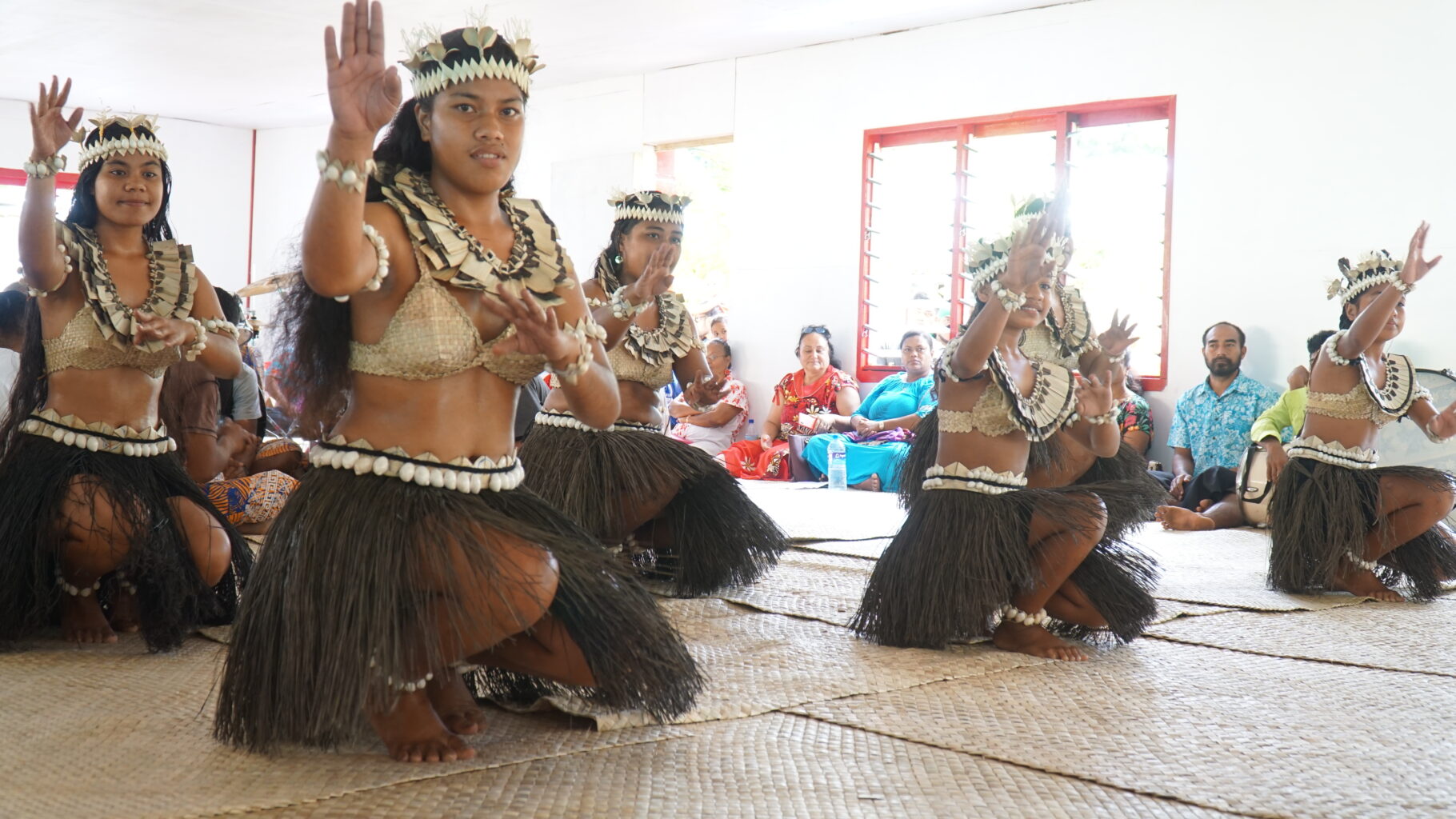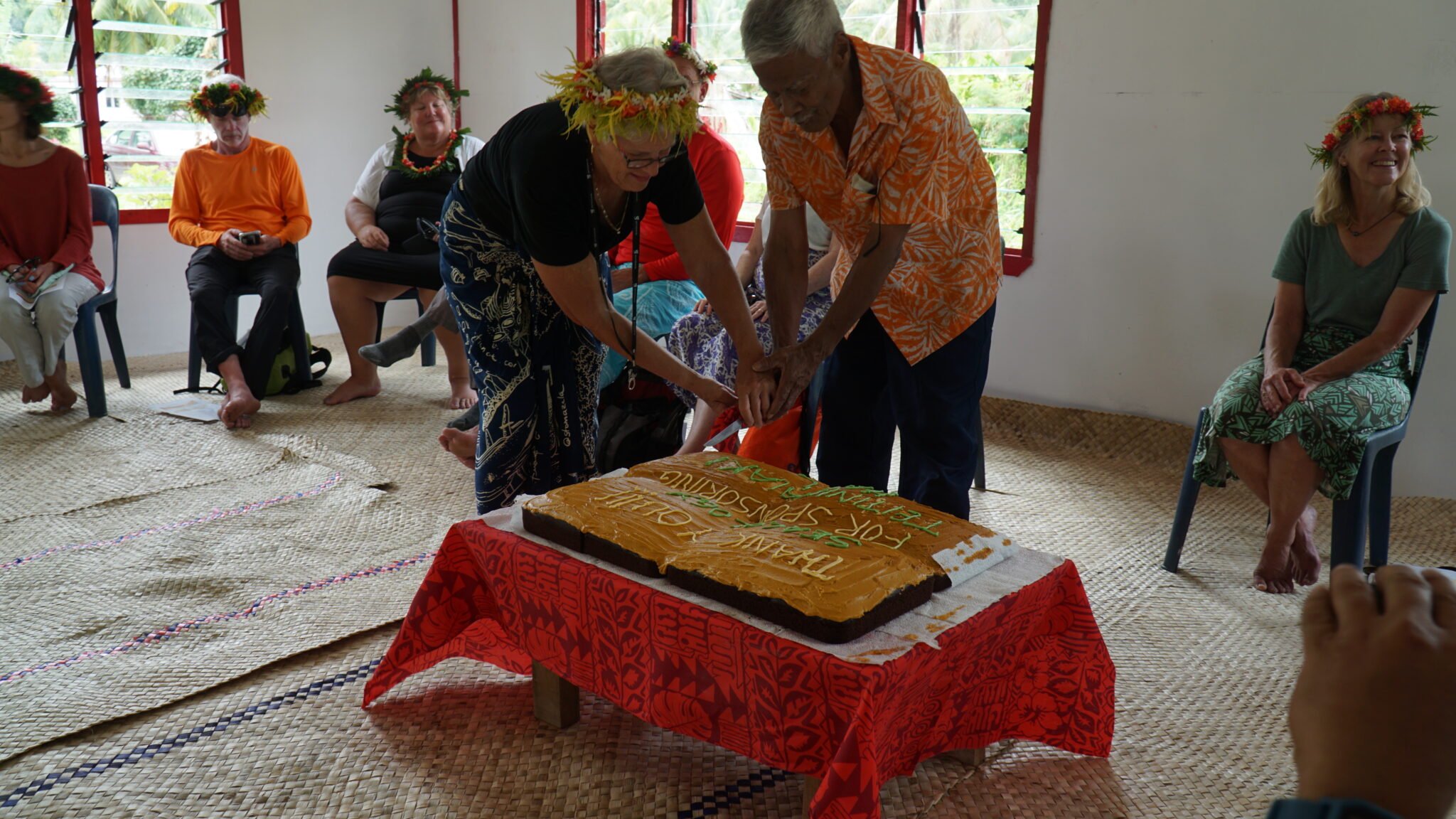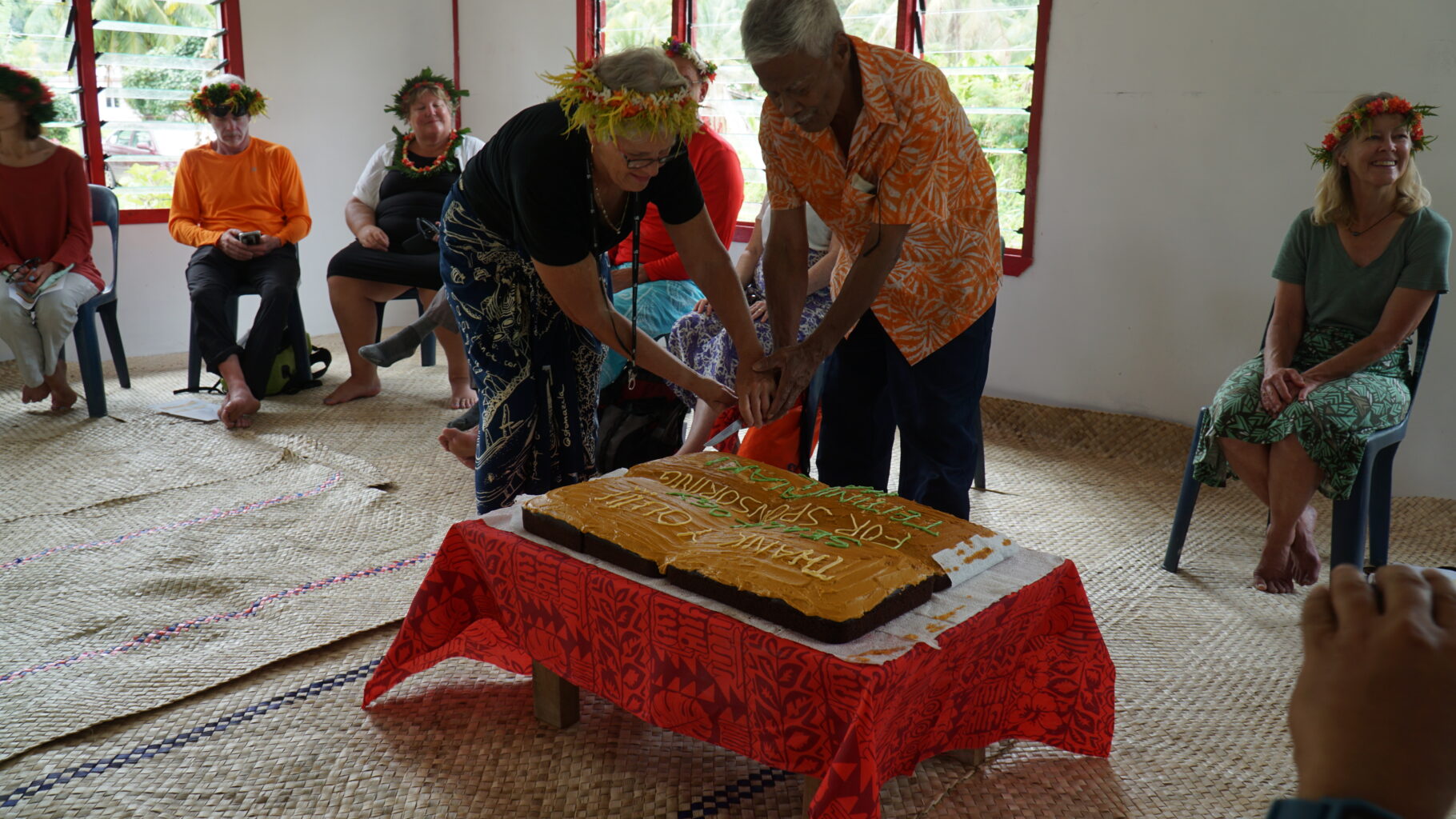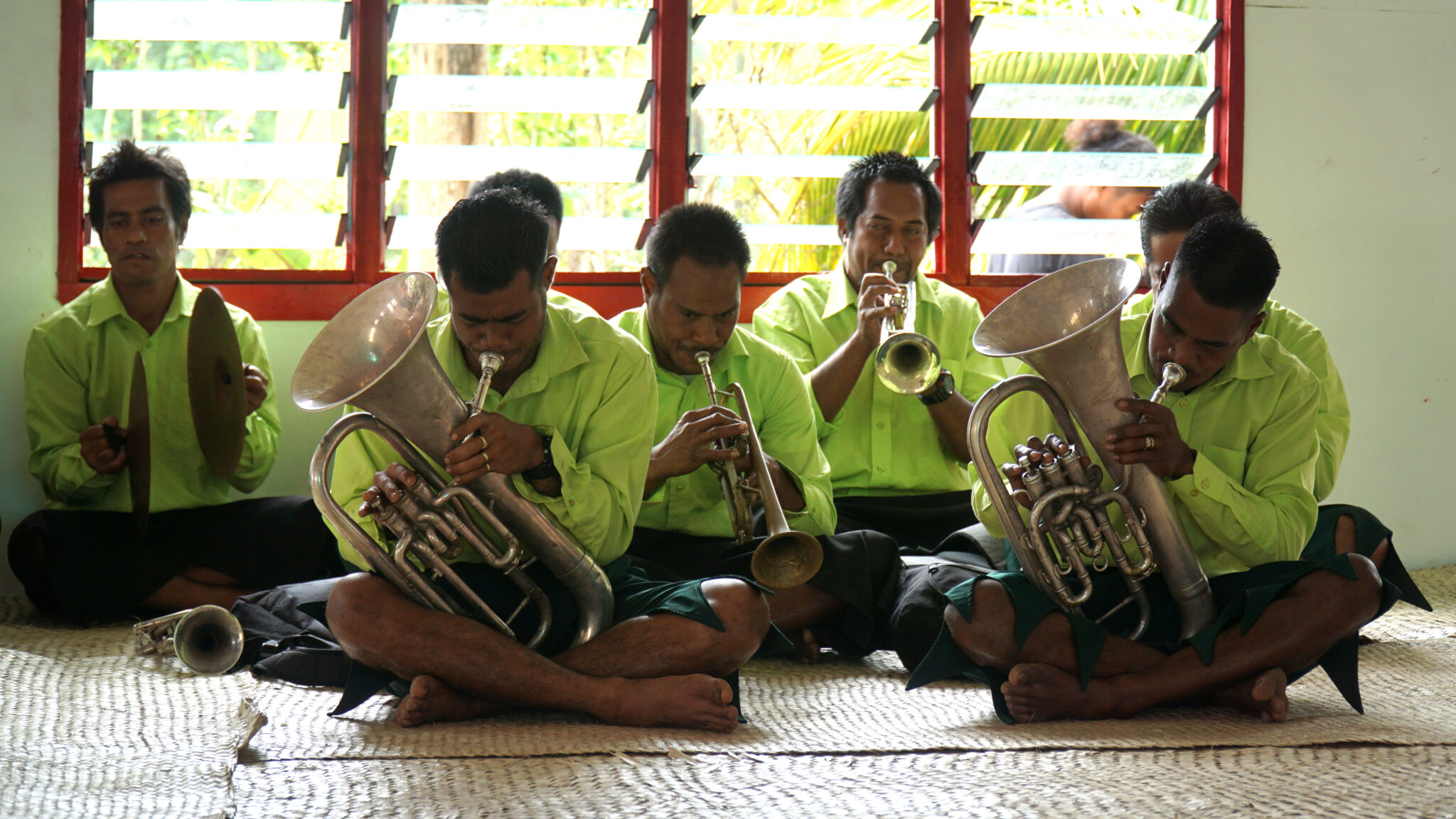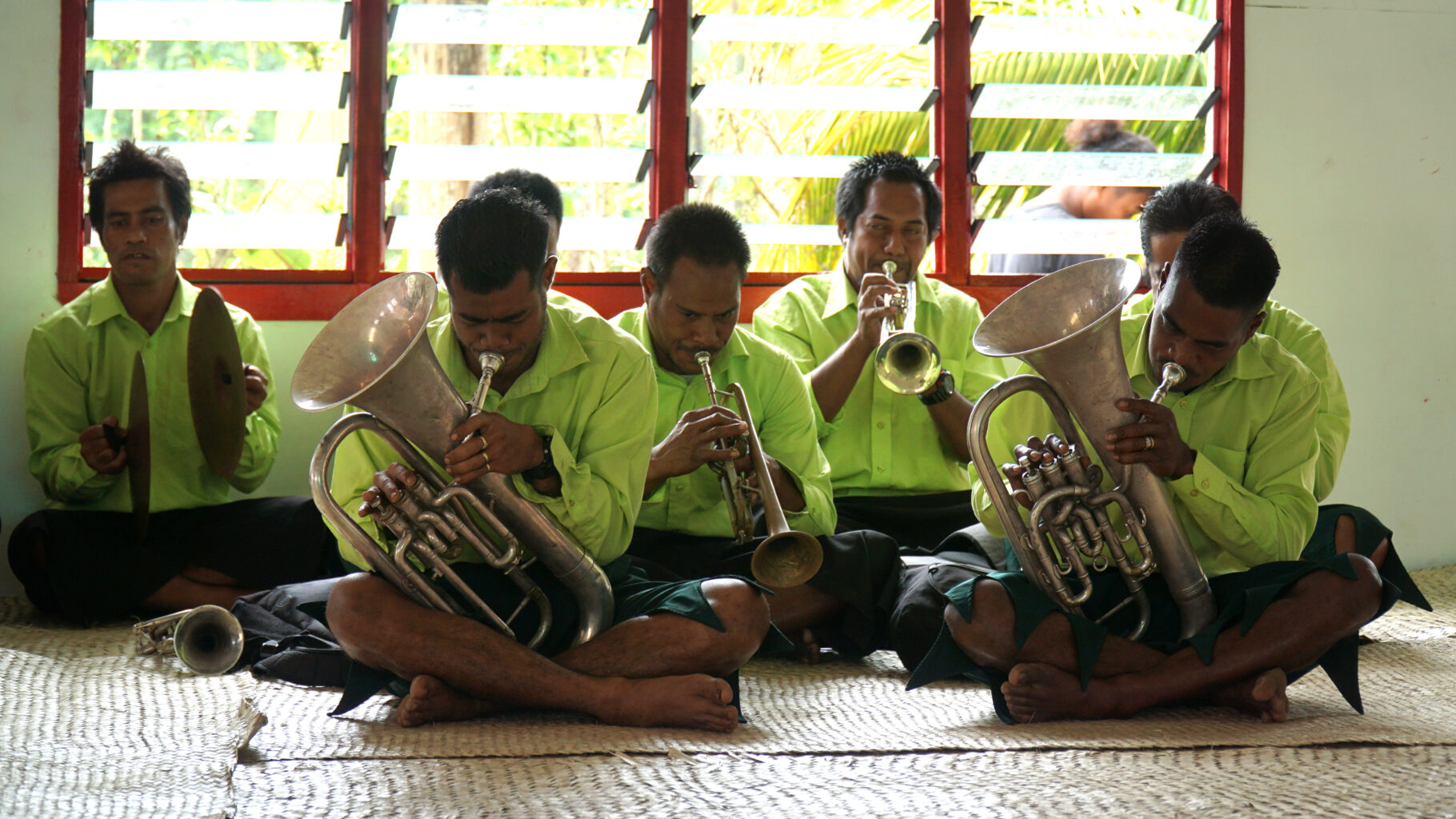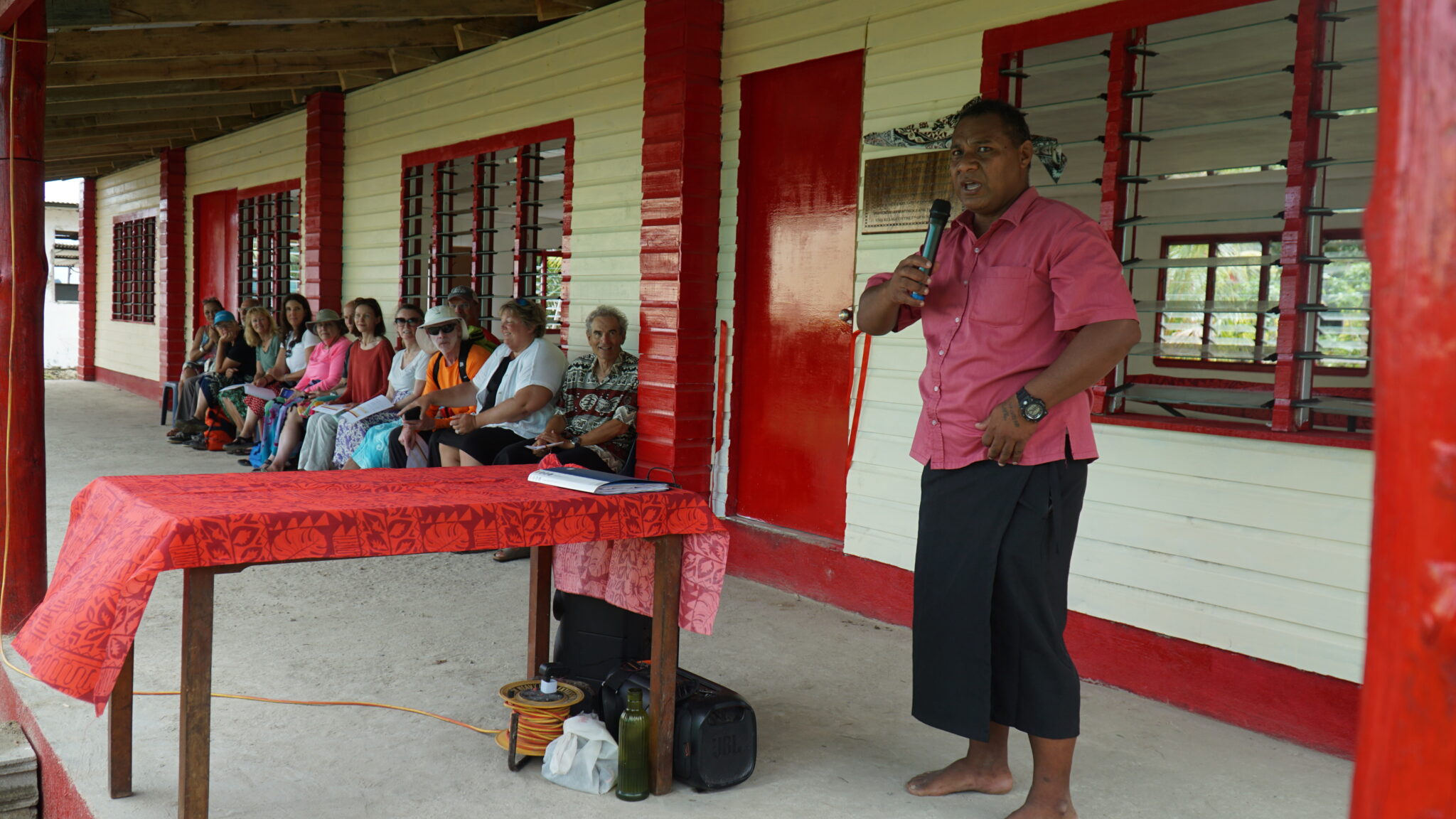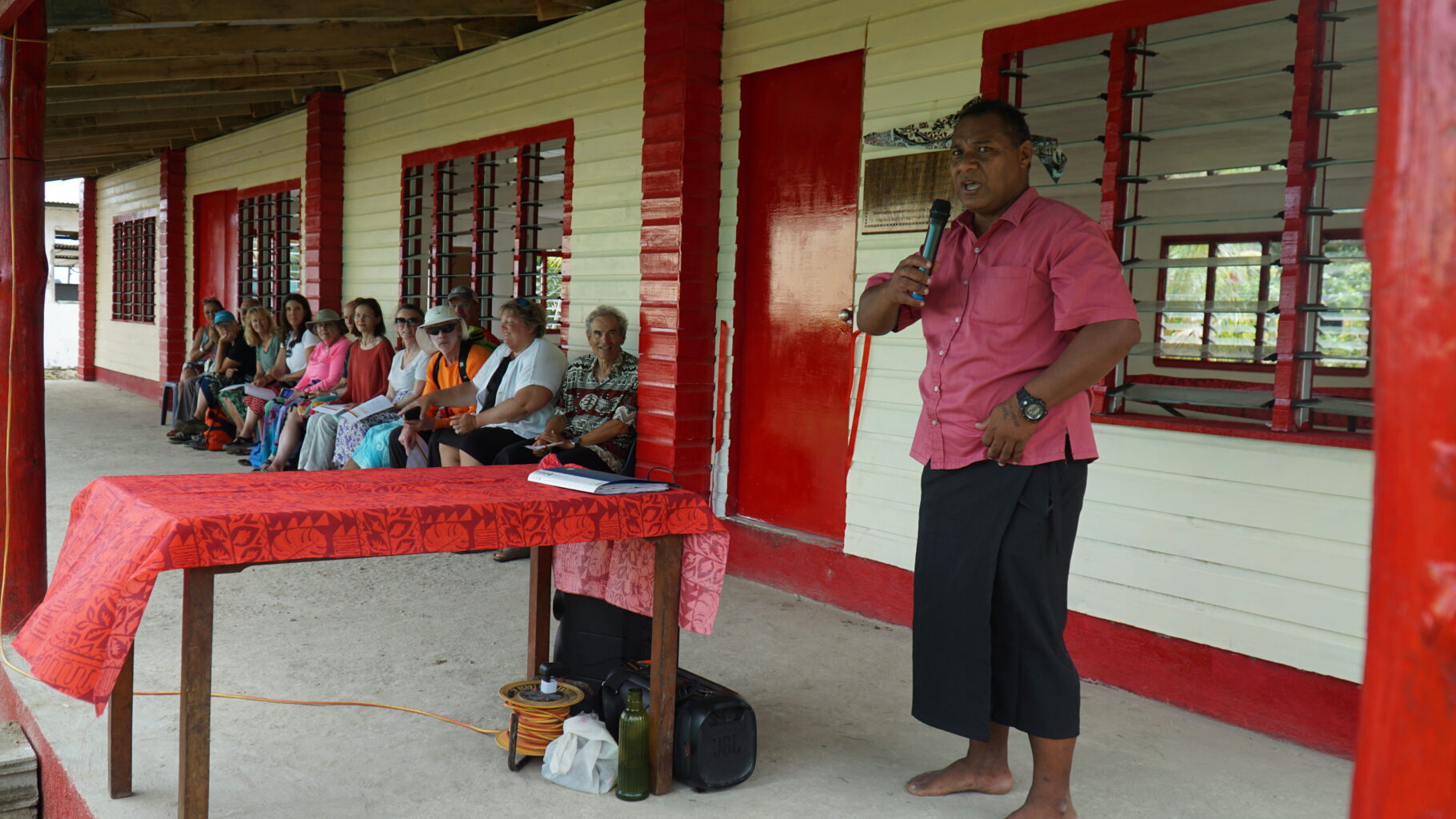Seacology offers long-needed support to displaced community in Fiji
The people of Rabi Island, Fiji, were forcibly resettled there after the second world war, and still face hardship. But their culture and sense of community remain strong—and were on full display for a group of Seacology travelers in September. On a visit to inaugurate our newly completed project in Uma Village, they were treated to a warm welcome and a day of traditional dance, music, and abundant food.
A challenging past
The history of Rabi’s people, originally from the island of Banaba, is a difficult one. Their home island (in what is now Kiribati), was devastated by decades of phosphate mining while under British control. Much of it was left uninhabitable. After a brutal Japanese occupation during World War II, the islanders were moved to Rabi (pronounced “rambi”) Island, more than 1,200 miles away. The overwhelming majority of the Banaban people remain on Rabi today.
They have made a home of their new island and worked hard to preserve their culture there. In fact, Uma shares its name with the largest village on Banaba. But in addition to the challenges common across many South Pacific islands — tropical cyclones, rising sea levels, and limited economic opportunities, to name a few — they also struggled for recognition as citizens of their new country. This lack of political representation too often also meant a lack of investment. While they finally won a hard-fought battle for full Fijian citizenship in 2005, economic support has been slow to reach the small island.
A brighter future
Last year, the community approached Seacology seeking funds to repair a small community building, and build a new, larger hall to be used as a kindergarten, meeting space, and storm shelter for Uma and its surrounding villages. Uma’s leaders pledged to protect a large swath of local forest. Totaling more than 1,200 acres, this area contains rare hardwood trees that otherwise would be at risk from agricultural development.
The village also agreed to plant mangroves along a degraded area of shoreline, an urgent need as sea levels rise and coastlines erode. A healthy barrier of these trees can help shield structures at low elevation from the waves and wind of the area’s frequent and increasingly intense storms, and slow erosion. They also support the marine species that Rabi’s many subsistence fishers rely on.
Within just a few months, the large, sturdy building stood completed, carefully built by local carpenters. By the time our expedition arrived, it had been colorfully painted and decorated with traditional hand-woven mats. Hundreds of excited residents of Uma and nearby villages gathered in front of the new hall to witness the ribbon-cutting.
Inside, local leaders spoke movingly of the meaning of the project for their historically neglected community.
“What the British Phosphate Commission dug was the habitat and the ecosystem of the community, who in those days had no knowledge of economic activities. Had Seacology existed then, the Banabians would have appealed to their intermediaries for protection from mining,” said Anuantaeka Takinana, a village elder.
“We witness today Seacology’s approach of a win-win strategy. The people of Uma win through your generosity in building their community hall,” he continued. “Seacology wins by the satisfaction expressed in the eyes of joy from the people of Uma, sitting in this hall and fulfilling their dreams, culturally and socially. Seacology and Uma share the victory in the preservation of 500 hectares of forest and the mangroves on the shoreline.”
Then, the real party began. A brass band set the festive mood for hours of celebration, and the younger members of the community performed traditional dances, before inviting the Seacology guests to join in. With some 300 local people present, it was one of the best-attended Seacology project dedications in memory.
Watch some highlights of the Uma Village community hall opening below. The event was also covered in an article in the Fiji Times.


